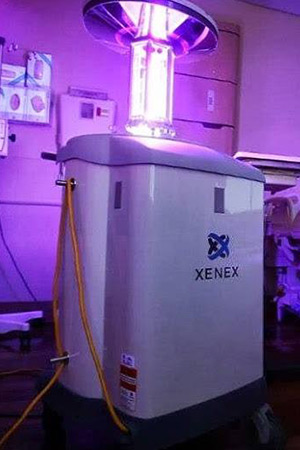| Online: | |
| Visits: | |
| Stories: |

| Story Views | |
| Now: | |
| Last Hour: | |
| Last 24 Hours: | |
| Total: | |
WE Already Have an Ebola-Stopper! It’s Just Not a Drug…
This machine has been around awhile and is now in over 250 hospitals, costs $100 000, pays for itself in a year by saving on drug treatment for infectiions and no one in the drug industry knows about it. Someone should tell them there might be a conspiracy against them… Tom Dennen
.From the Health Ranger
While vaccine makers and drug companies are rushing to bring medical interventions to the market that might address the Ebola pandemic, there’s already a [green] technology available right now that can kill Ebola in just two minutes in hospitals, quarantine centers, commercial offices and even public schools.
It’s called the Xenex Germ-Zapping Robot, and it was invented by a team of Texas doctors whose company is based on San Antonio. (And no, I didn’t get paid to write this. I’m covering this because this technology appears to be a viable lifesaving invention.)
The Xenex Germ-Zapping Robot uses pulsed xenon-generated UV light to achieve what the company calls “the advanced environmental cleaning of healthcare facilities.” Because ultraviolet light destroys the integrity of the RNA that viruses are made of, it renders viruses “dead.” (Viruses aren’t really alive in the first place, technically speaking, so the correct term is “nonviable.”)
Ebola, just like most other viruses, are quickly destroyed by UV light. That’s why Ebola likes to spread in dark places where sunlight doesn’t reach. (Think of Ebola as a “vampire” virus that feeds off human blood but shuns sunlight…) The Xenex robot destroys Ebola on surfaces in just two minutes, zapping them with a specific wavelength of UV light at concentrations that are 25,000 times higher than natural sunlight.
So many of the approaches to disinfection in hospitals today are based on harsh, toxic chemicals that pose a secondary risk to the health of hospital patients and staff. But UV light emitted by the Xenex robot leaves no chemical residue whatsoever and requires no chemical manufacturing plant to manufacture. This is truly “light medicine” because it disinfects using specific frequencies of light.
Studies touted by the manufacturer appear to show extraordinary disinfection results spanning both bacterial superbugs and viral strains:




